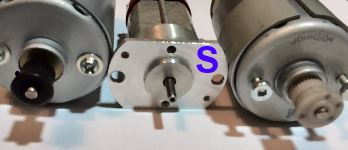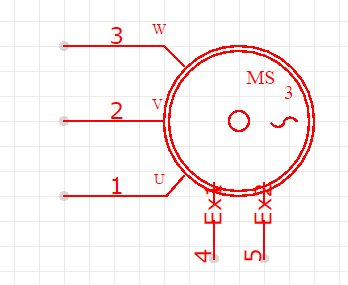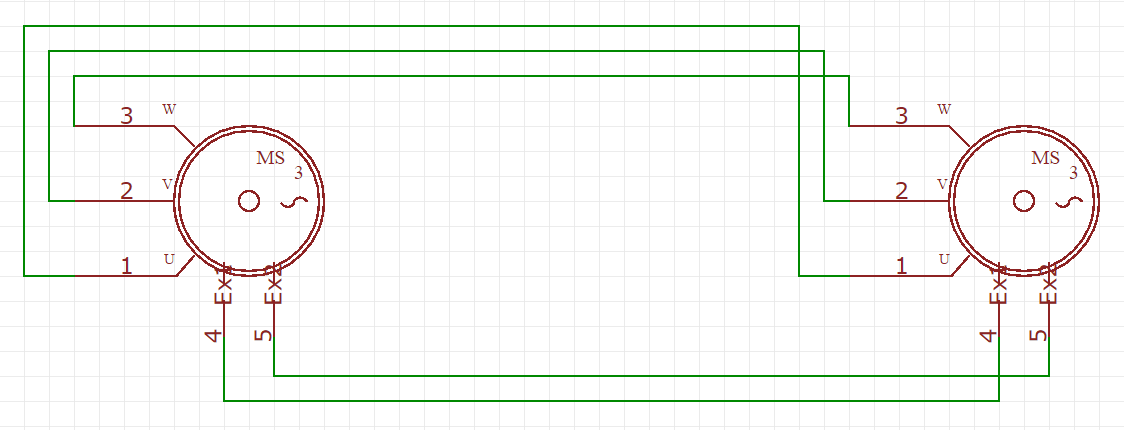Selsyny - how was information about the location once transmitted?

From the electronics archive - selsyns
Some of the forum members probably remember circuits based on selsyns, nowadays selsyn links have been practically completely supplanted by modern solutions.
Imagine that you are given the task of designing a circuit that transmits information about the pivot of the axis of one of the machines to a distant control room.
This could be, for example, the position of the wind direction indicator, the rudder of a ship, or the angle of opening the door of a nuclear shelter.
Depending on the characteristics of the machine, an encoder (preferably absolute) or even a potentiometer can be used to determine the position of an element.
Information from the sensor can be transmitted by wire as an analog signal or as a digital signal via a copper, fiber-optic, perhaps radio link.
As an indicator, an LCD display or even an analog pointer can be used, generally anything that will clearly transmit the information to the operator.
You will probably give many more possible implementations of the system.
Let's assume that you have successfully completed the project, the appetite of the ordering party grows, and this time you are given the task of building a system that will allow you to move a part of the machine by a given angle depending on the settings on the control panel.
This time we control the throttle that allows you to dispense liquid to some machine.
The part that takes the data on the settings can be an encoder, a potentiometer, as well as a numerical panel. Transmission of any kind as long as it is reliable. On the other side of the transmission channel, you can use a servo motor, which will set the axis in the desired position depending on the received signal. In some cases, you may decide to use a controller and a stepper or DC motor with a gearbox and a system that tracks the position of the axis. In less demanding applications, you'll probably be tempted by a modeling servo.
Solutions again can be multiplied for quite a long time.
Now let's assume that under strange circumstances you go back in time 50 years and are given the task of making the above two circuits.
It turns out that there is a problem with buying systems of modern automation
After describing the problem, it turns out that the solution to both the task of transferring information about the angular position of the shaft, as well as remotely rotating the shaft (doing the work) by a given angle is selsyn.
What are selsyns?
After reading the text so far, you know exactly what tasks selsyns can perform, but how are they built?
The selsyn has a design similar to a motor with a three-phase stator winding, and a single-phase rotor winding. The Selsyn has three terminals connected to the star-connected stator winding and two terminals connected to the rotor winding. The current to the rotor is fed through rings and brushes.
This is how you can imagine the rotor:

Now we create a three-phase star-connected winding around the rotor:

The coils are offset by 120°.
On the housing we still bring out the terminals that supply current to the rotor through the brushes:
 .
.Schematically, we can represent our selsyn as follows:

And now the most interesting thing, how do we connect the selsyns so that one mimics the movements of the other?
We need five wires. We connect the leads supplying the rotor windings in parallel (two wires). We connect each of the corresponding phases together (three wires).

In order for the devices to work, we supply AC power to the rotor windings:

The voltage of the selsyn power supply varied, it could be 220V, 110V, 45V and many others, the frequency did not necessarily have to be 50Hz, a voltage of 400Hz was often used.
As you can easily imagine - in a selsyn link could work more units connected together, as a result, you could build a system with multiple indicators. In practical implementations, there were also windings and circuits (RC) to suppress vibrations. Selsyn could also have a single-phase stator and a three-phase rotor winding. There were solutions with a three-phase stator and rotor. Most of you probably noticed that the selsyn could be used as a mechanical phase shifter. The selsyn could be equipped with a gearbox, and could also be used to build a simple tracking control with a separate drive motor (something similar to today's model servo). The operation of the selsyn in practice is reviewed here : https://www.elektroda.pl/rtvforum/topic4001320.html
On YT you can find many videos showing the operation of selsyn, an example found demonstration of the operation:
Here we can see a set of evaluation set with selsyn
This is how it used to be -. using selsyn, it was possible to transmit information about the position of the axle using electrical connections.
Have you ever come across a device with a selsyn? .



Comments
Control of ham antennas. [Read more]
Hello. A dozen or so years ago I made a setter for a thyristor drive out of selsyn. Indestructible compared to a potentiometer. [Read more]
I also saw a 2m directional dipole rotated with a selsyn, but there was a problem with the system inertia and the precise azimuth setting. [Read more]
Selsyn as a drive unit is an interesting idea. In shortwave applications, imperfections were compensated for by the simple structure of the system and the low prices of the selsyn used. [Read more]
I meet every day because of my job. The funniest thing is the translation and stare of the trainees / apprentices and the immediate ideas of replacing the selsyns with shields and arduino. The easiest... [Read more]
About 2 or 3 months ago, in the school at the studio, we connected a system of 2 selsyns. [Read more]
So selsin can still be found in the systems used. Maybe as practitioners you will briefly explain why frequencies of the order of 400 Hz are used and how are they produced for the selsyn link? [Read more]
@TechEkspert The efficiency / performance of AC power sources at 400Hz is much higher (please do not correct me, I am not an energy specialist, I am giving the reason why most of the captured selsins... [Read more]
The principle of operation and the construction of the selsyn do not differ much from the principle of operation and construction of the resolver, at least from the setting selector side. Resolvers are... [Read more]
I dealt with them for 15 years at the Teltomat asphalt mixing plant. The transmitters are mounted on scales: flour and aggregate, the receiver is located in the control cabin where the reed switches are... [Read more]
I remember Selsyny from my technical college classes, which I graduated 20 years ago. They had such a strange name, but I was intrigued by the fact that with the help of machines similar to motors, you... [Read more]
Before long, we will be using quantum entanglement to convey information. [Read more]
Hi I will just add that you can still buy new rotors for antennas - just with selsyn. best regards [Read more]
In a Russian magnetic grinder, you can find selsins to determine the grinding ranges. The machine from the 70s, so as you can see, the selsyn is hard to hit. [Read more]